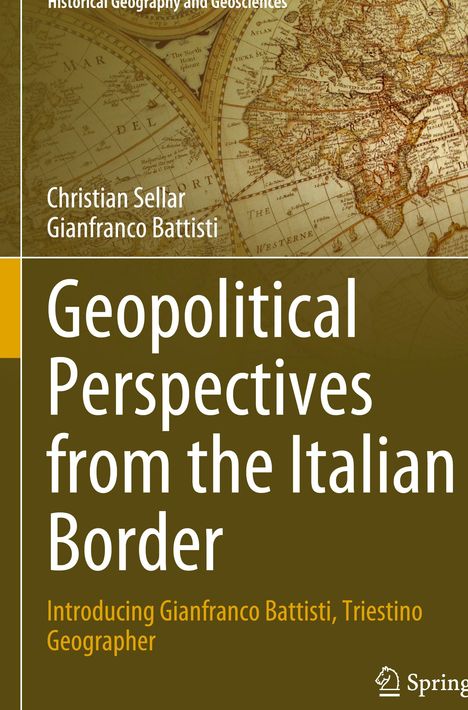Gianfranco Battisti: Geopolitical Perspectives from the Italian Border, Kartoniert / Broschiert
Geopolitical Perspectives from the Italian Border
Buch
- Introducing Gianfranco Battisti, Triestino Geographer
lieferbar innerhalb 2-3 Wochen
(soweit verfügbar beim Lieferanten)
(soweit verfügbar beim Lieferanten)
Aktueller Preis: EUR 175,23
- Verlag:
- Springer Nature Switzerland, 04/2024
- Einband:
- Kartoniert / Broschiert, Paperback
- Sprache:
- Englisch
- ISBN-13:
- 9783031260469
- Artikelnummer:
- 11832878
- Umfang:
- 152 Seiten
- Nummer der Auflage:
- 2023
- Ausgabe:
- 2023
- Gewicht:
- 270 g
- Maße:
- 235 x 155 mm
- Stärke:
- 9 mm
- Erscheinungstermin:
- 16.4.2024
- Hinweis
-
Achtung: Artikel ist nicht in deutscher Sprache!
Weitere Ausgaben von Geopolitical Perspectives from the Italian Border |
Preis |
|---|
Klappentext
This book presents the work of Gianfranco Battisti, on Geopolitics and Border Geographies in north-eastern Italy, Europeanization, and Globalization, contributing to debates on the inclusion of non-English speaking scholars in international geography. It highlights the institutions and cultures that shaped more than fifty years of his writing, as they emerged through his biography, theoretical contributions, and methods. Battisti uses historical geographies as tools to explain contemporary geopolitics while maintaining a high attentiveness to data-driven research. He applies these tools to investigate geographical facts at the local, regional and global scale, viewed from the distinctive viewpoint of the city of Trieste, a laboratory of geopolitical change for more than two centuries.To better understand the importance of place in the production of geographical theories and methods, this book discusses Battisti s biography in the context of the Triestino School of geography that started from the same French and German classics that shaped Anglo-American geography in the 19th century to later express original features. This book explains such features by introducing the concept of Geography as an industry that operates in a local and global context. It then deploys the methods Battisti developed within his school to discuss the realities and problems of borderlands in a historic and local context during the first and second World Wars and the geopolitical rationale that shaped the times between. The book continues to give an outlook, on how Europe reconstructed itself geopolitically, the implications thereof, and a comparison of how this fits in with geopolitical agendas on a global scale.

Gianfranco Battisti, Christian Sellar
Geopolitical Perspectives from the Italian Border
Aktueller Preis: EUR 175,23

